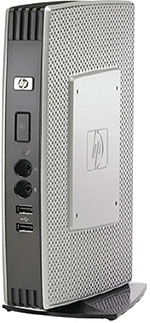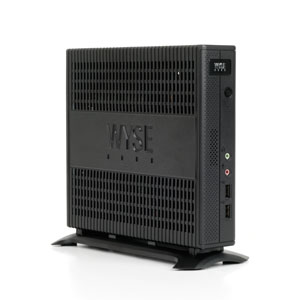REDMOND, Wash. — Feb. 17, 2011 —While not a new concept, thin computing is finally poised to take-off in a meaningful way. You’re bound to start seeing more and more of these devices across diverse industries and in all types of enterprise settings. As organizations become increasingly global, mobile and complex, the adoption and demand for secure, cost-effective and manageable computing is on the rise. According to IDC, annual shipments of thin-clients in the United States are forecasted to reach nearly 2.4 million units by 2014, growing at a compound annual growth rate of 20.9 percent for the period 2009-2014 (IDC, Worldwide Enterprise Thin Client 2010-2014 Forecast and Analysis, Doc. # 223928, June 2010). With enterprise IT continually seeking PC power, but with simple involvement, the growing popularity of thin clients should come as no surprise.
So what’s the real skinny on thin clients?
Tad Bodeman, the director of marketing, thin client solutions, personal systems group HP, remarks that as more enterprises look to tap into the cloud for a variety of applications and services, thin clients are becoming a major consideration. Enterprises in nearly every sector from financial services firms, to healthcare, to manufacturing environments, are seeking practical thin client solutions that increase the security of their data and efficiency of their workforce.
“It’s all about reducing complexity, risk and the cost of deployment,” said Bodeman. “But what makes thin clients really appealing to many of our customers today is the user experience; they deliver a rich, multi-media experience while providing users with the interoperability and familiar Windows environment they often depend on.”

The HP t5740e Thin Client is designed to deliver a rich PC-like experience with enhanced security and easier management.
Thin clients have come a long way from their mainframe predecessors of the 1980’s. Gone are the green screens and flashing text, now replaced by fully interactive and immersive experiences. Although rich clients offer the full, local experience end users expect from their PCs, many original equipment manufacturers (OEMs) look to Microsoft Windows Embedded to provide flexible operating systems to create thin client solutions to meet the needs of various organizations. Microsoft has announced how it is working with valued partners, including HP and Wyse, to invest in next-generation thin client devices that meet these industry needs.
Thin clients powered by Windows Embedded Standard 7 offer a highly reliable and easy to manage system for remote information access. The platform provides fundamentally secure features, such as AppLocker, to guard against potential security problems posed by human error or hackers. This is precisely why government organizations and federal agencies that deal with sensitive information and adhere to rigorous compliance policies are turning to thin clients built on Windows Embedded platforms. Windows Embedded Standard 7 is the first Microsoft Embedded operating system that fully supports IPv6 and IPv4, allowing for better security and enabling easy integration into the enterprise network.
“Security is a big driver for our government customers,” said Jeff McNaught, chief marketing and strategy officer at Wyse Technology, the global leader in cloud client computing solutions. But McNaught also sees other industries like financial services, healthcare, manufacturing and transportation moving towards thin client solutions with broad functionality for a wide range of enterprise applications. “Thin Clients moved past the call center long ago. Today financial traders to hospital administrators deal with highly confidential data, and also need to create or consume presentations, spreadsheets, graphs, or HD animation or video. Today’s thin clients are up to the task.”
Windows Embedded platforms for thin clients can be ideal for IT administrators who need to connect to a Windows Server, which can be accomplished through RemoteFX capabilities that provide the convenience of managing all peripheral devices from one main control center. Additionally, features such as Active Directory and System Center Configuration Manager, help enterprises manage policies and update software from a central location while easily linking to the world of Windows with Internet Explorer and Windows Cloud Services. Office workers benefit from using Windows Embedded Standard 7 based thin clients for the personalization and optimization capabilities to help better manage daily tasks.

The Wyse Z90 delivers an enhanced thin client experience through a combination of performance, simplicity and connectivity.
There’s also a rapidly growing need to fulfill specialized work functions where thin clients are an attractive alternative to higher cost and more full function solutions. Think about environments where task workers – a retail salesperson, nurse or manufacturing floor manager – need access to a limited number of web-based or single-function applications. Windows Embedded Compact 7, currently in community technology preview (CTP), provides developers with the tools to create these kinds of highly specialized devices in various form factors. These tools also provide developers with the ability to easily integrate new thin client devices with existing infrastructures and Windows Embedded technology, allowing for reduced time and money spent on managing and integrating a company’s thin client network.
As we’ve discussed, thin clients offer lower operational costs, superior security and easy access to essential applications. As OEMs like HP and Wyse bring new innovative products to market, enterprises across many industries will find solutions to meet their unique computing needs. But one thing is for certain: thin clients are anything but thin when connected to the world of Windows.
To keep up to speed with all the latest Windows Embedded thin client solutions and news, be sure to check our Windows Embedded News Center and follow us on Twitter @MSFTWEB.




